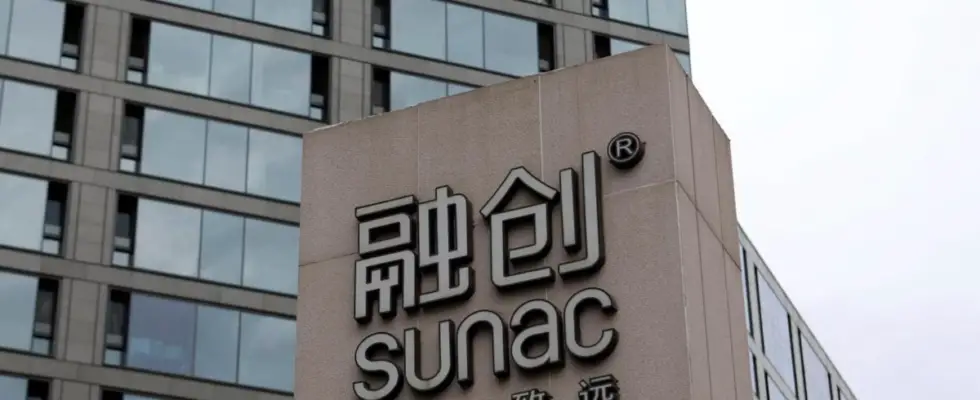Loomis Sayles, a massive global investment firm, is taking a more bullish view of the struggling Chinese real estate market. Recent reorganisation initiatives, they say, are starting to pay off, and that, together with better mood, may cause a quicker rebound than anticipated.
Matt Eagan, a fund manager at Loomis Sayles, warns that investors who delay may lose out on this possible recovery. The Boston-based firm shares this prediction; it manages a whopping $303 billion. Fidelity International sees an opportunity as well, pointing to past data that shows investment in developers who manage to stay afloat during a housing market crash may provide substantial profits.
The two companies, Loomis Sayles and Fidelity, are backing their claims with actions. Bonds issued by troubled developer Sunac China Holdings have been increasing in Eagan’s fund’s holdings. Similarly, a Singapore-based multi-asset fund run by Fidelity recently made a minor investment in shares of state-owned developers in China.
Although the real estate market has struck rock bottom, according to Eagan, the rebuilding process will take a long time. It was simple to write off the industry as a downward bet in the past, he said, but that’s not the case now.
A total collapse of the property market would be financially disastrous for China, according to Eagan, who forecasts that the government would take more measures to restore the industry. Among his collaborative ventures is the management of the 97%-beating Loomis Sayles Global Allocation Fund.
Sunac, which went bankrupt in May 2022 after failing on its US dollar obligations, restructured its debt in November and is now Eagan’s favourite. He has high hopes for Sunac, a company that is selling for a fraction of what it was worth before the reorganisation.
Eagan is keeping an eye on Yuzhou Group Holdings, another promising option. The company indicated in late December that it was getting close to an arrangement with a group of creditors.
Unsustainable debt levels, declining long-term economic development, and growing disinflation have put enormous pressure on the stocks and bonds of Chinese real estate businesses over the last four years. Since the end of 2019, a Bloomberg index that includes shares of real estate owners and developers has fallen about 80%, while a measure that is dominated by developers and includes high-yield China dollar bonds has down 45% during the same time.
But good things have been happening recently. A huge automobile dealer, two prominent real estate developers, and a third party have all recently announced intentions to pay off their maturing debt.
According to George Efstathopoulos, a Singaporean money manager at Fidelity, the companies who make it through sector consolidation will be the ones to reap the rewards when the economy swings around.
Bloomberg reports that the Fidelity Global Multi Asset Growth & Income Fund is a shareholder in many Chinese real estate development companies, such as Longfor Group Holdings, China Resources Land, and China Overseas Land and Investment.
There is still cause for prudence, even with these promising improvements. The economy is still precarious, despite the fact that officials have offered assistance, such as reducing mortgage rates and increasing the issuance of financing for infrastructure projects. December saw a 35% decline in value for new home sales among the top 100 developers when compared to the same month last year.
Optimists contend that the debt market has already taken into consideration all the negative information. Though they make up only 5% of Asia’s high-yield debt market, Chinese developers are responsible for 35% of the bonds priced below $30 USD on the dollar in the ICE BAML China Property High-Yield Index.
Hong Kong-based JPMorgan Asset Management Chief Investment Officer for Asia Fixed Income Julio Callegari said, “A lot of the negative views are well priced.” In his opinion, house sales are about to hit rock bottom, and the market could see a little upturn by 2025.


